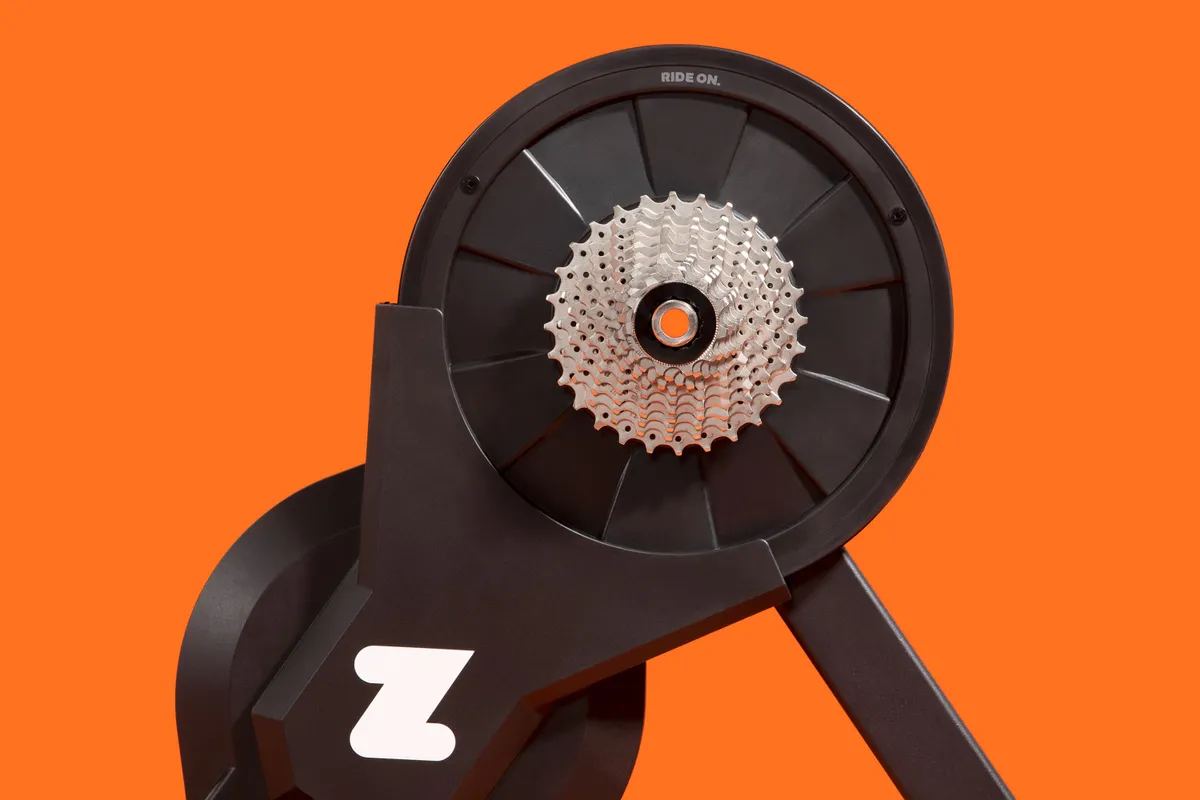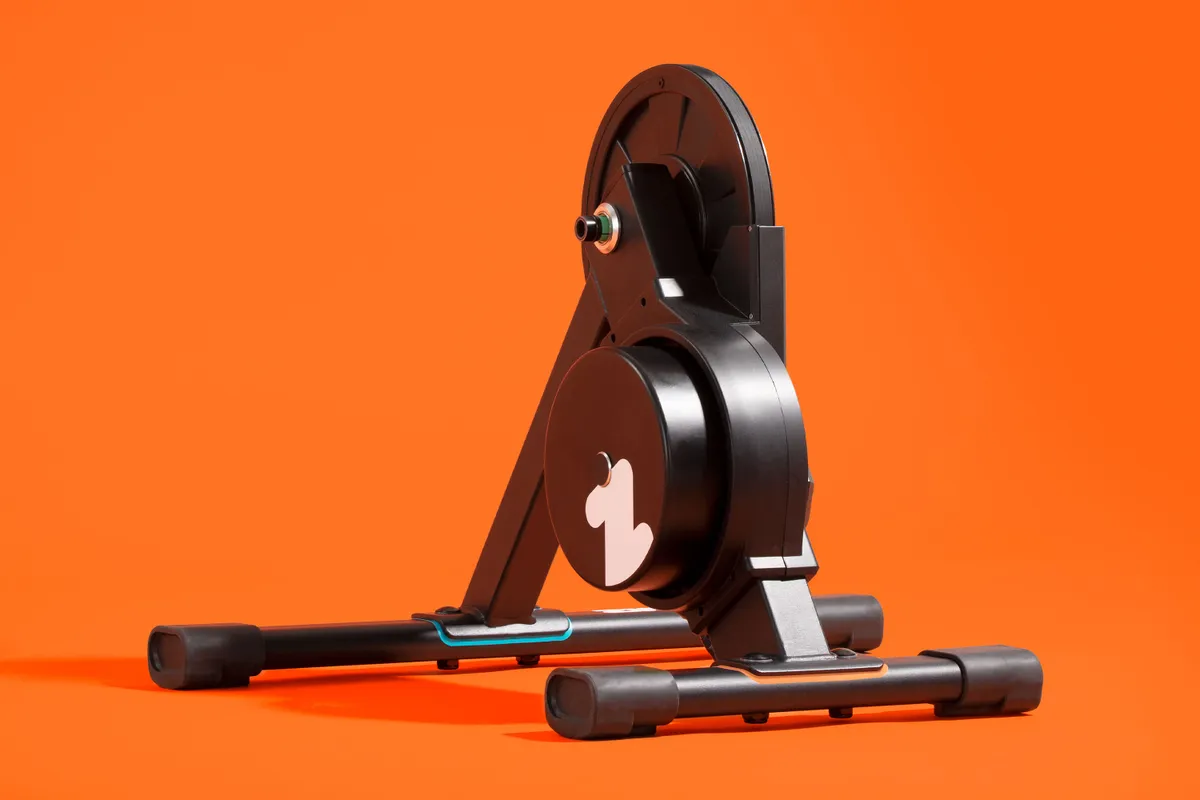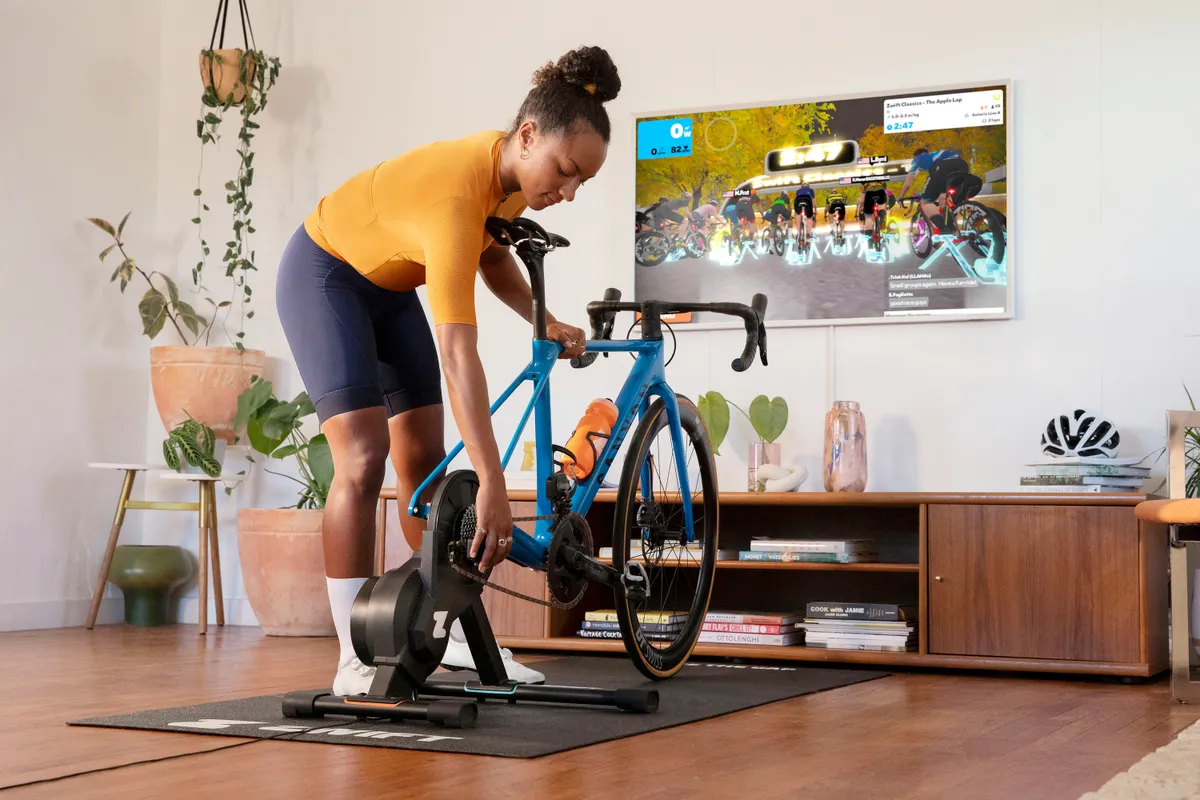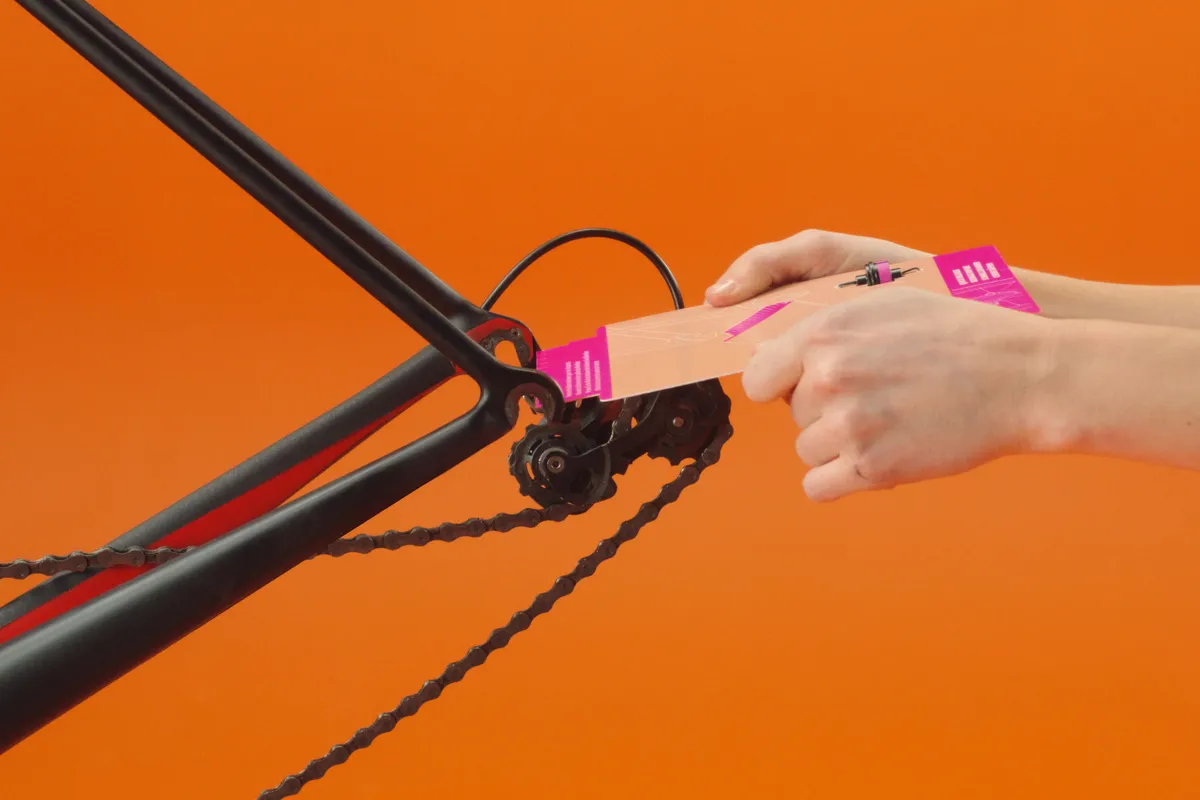Zwift has announced the Zwift Hub, an aggressively priced direct-drive smart trainer that's designed to make getting started with Zwift (one of the best indoor cycling apps) and virtual indoor cycling as easy as possible.
With competitive specs and a keen price of £449 / €499 / $499 with your choice of cassette pre-installed, the Zwift Hub could be set to shake up the smart trainer market considerably, if it can deliver on its promises.
Taking a more holistic approach to the user experience, Zwift says it has streamlined the assembly process significantly, and includes colour-coded guides to help get the trainer ready to ride, “making it both easier, and more affordable to get set up on Zwift”.
Why is Zwift launching a smart trainer?

First and foremost, Zwift says it is looking to simplify the user experience, citing the cost and complexity of many smart trainers as a barrier to entry for new users.
“Getting set up on Zwift hasn’t been an easy process,” says Eric Min, the company's CEO. “It can be hard to know exactly what equipment you need to Zwift, and that equipment can be costly.”
Min says the Hub’s pre-installed cassette, colour-coded assembly instructions and native compatibility with the Zwift and Zwift companion apps mean “getting started on Zwift has never been easier”.
The announcement of the Zwift Hub comes almost eight years after Zwift, a massively popular multiplayer online cycling (and running) game, first launched in September 2014.
Until now, Zwift has left it to third-party smart trainer manufacturers to provide the necessary hardware for its game. That has all changed now, though.
It’s worth noting that Zwift says this announcement doesn’t mean existing or future third-party smart trainers or indoor bikes will cease to be compatible with Zwift – this is simply an additional entry-level option.
Likewise, though Zwift clearly intends for you to use the Zwift Hub with the Zwift app, it is – like any smart trainer – also compatible with other indoor cycling apps, such as Wahoo Systm, Wahoo RGT or Rouvy.

Zwift Hub smart trainer details
Despite its relatively low price, the Zwift Hub nevertheless has impressively competitive on-paper specs.
It has a built-in power meter with a claimed accuracy rating of +/- 2.5 per cent, a 4.7kg flywheel and a controllable resistance unit “to unlock the fully immersive experience of riding on Zwift”.
As with other smart trainers, it can modify the resistance to your pedalling to simulate Zwift’s virtual courses and bunch dynamics, automatically increasing and decreasing the resistance to simulate climbs, descents or drafting other riders.
It also enables riders to perform ERG mode and power-based workouts, such as those found in Zwift workouts and training plans.

Zwift Hub specifications
- Flywheel weight: 4.7kg
- Claimed power accuracy: +/- 2.5 per cent
- Maximum power: 1,800 watts
- Maximum gradient: 16 per cent
- Maximum rider weight: 130kg
- Total trainer weight: 15kg
- Device compatibility: Bluetooth, ANT+ and ANT+ FEC
- Bike compatibility: 142/148mm thru-axle or 130/135mm quick-release
The Zwift Hub is compatible with road, gravel and mountain bikes, and can accommodate 142/148mm thru-axles or 130/135mm quick-releases – whether disc brakes or rim brakes.
Zwift says it has, via a partnership with a London-based bike shop, tested more than 500 bikes from more than 70 brands, of varying frame sizes, drivetrain and brake types, for compatibility.
The California-based indoor training brand tells us the only bike that hasn’t fitted the Zwift Hub was a custom bike with a unique rear end.
The Hub can also pair with an ANT+ heart rate monitor and broadcast that data (along with speed, power and cadence data) to Bluetooth-only smart devices, such as Apple TV.

Can the Zwift Hub be used for virtual racing?
Yes, the Zwift Hub can be used for Zwift racing, with one small caveat.
The claimed power accuracy of +/- 2.5 per cent means the Hub is, as things stand, officially not accurate enough for use in Zwift-sanctioned Zwift Cycling esports events.
According to Zwift’s Cycling Esports Rules and Regulations, smart trainers or smart bikes need an accuracy rating of no more than +/- 2 per cent to comply.
Zwift confirmed this means “riders will not be permitted to use it [Zwift Hub] for Zwift Grand Prix or other esports events".

It’s worth noting, though, these rules apply only to a small number of high-end events, and are therefore unlikely to present any issues for the vast majority of users.
Ultimately, Zwift says, “Hub is designed to make it easier for cyclists to get onto Zwift, and to deliver an unmatched value in the trainer market.
“We hope that dedicated racers will understand that just as they might upgrade wheels, they will also have to upgrade their trainer in order to be able to be competitive in events at a certain level."
Is the Zwift Hub simply a re-badged JetBlack Volt?
Those familiar with the smart trainer market may have noticed the Zwift Hub has a strong visual resemblance to some other smart trainers, such as the Pinnacle HC Turbo and JetBlack Volt.
Zwift confirmed the Hub is manufactured in partnership with JetBlack (the spec list is practically identical to the Volt at a glance), but says it has created its own testing facilities and has specified custom parts for the Zwift Hub.
Zwift also said it had recently purchased a company that specialises in making high-specification motors, implementing its expertise into the design of the Zwift Hub internals.

All of these things are claimed to help to make the Zwift Hub more accurate and reliable, and to improve the trainer’s ride feel.
In order to test long-term durability, for example, Zwift says four production units have “been on test 24/7 and have logged 1,300+ hours of test data and counting” in its new test lab.
Real Zwifter data was also used to help simulate a more realistic usage scenario in a controlled setting.
On top of this, Zwift says its riders have racked up 1,540 rides, 10,000 miles and more than 515 hours of quality assurance testing.

Zwift Hub pricing and availability
The Zwift Hub will be available to purchase directly from Zwift for delivery to the United Kingdom, European Union and United States, from 3 October 2022. It will cost £449 / €499 / $499.
The price includes a choice of a 8-, 9-, 10-, 11- or 12-speed SRAM/Shimano-compatible cassettes, which will come pre-installed on the trainer.
While Campagnolo or SRAM XD-R freehubs are not available at launch, Zwift says it is looking at the possibility of selling these in the future. It did also note JetBlack Volt freehubs are compatible with the Zwift Hub and could be sourced independently.




